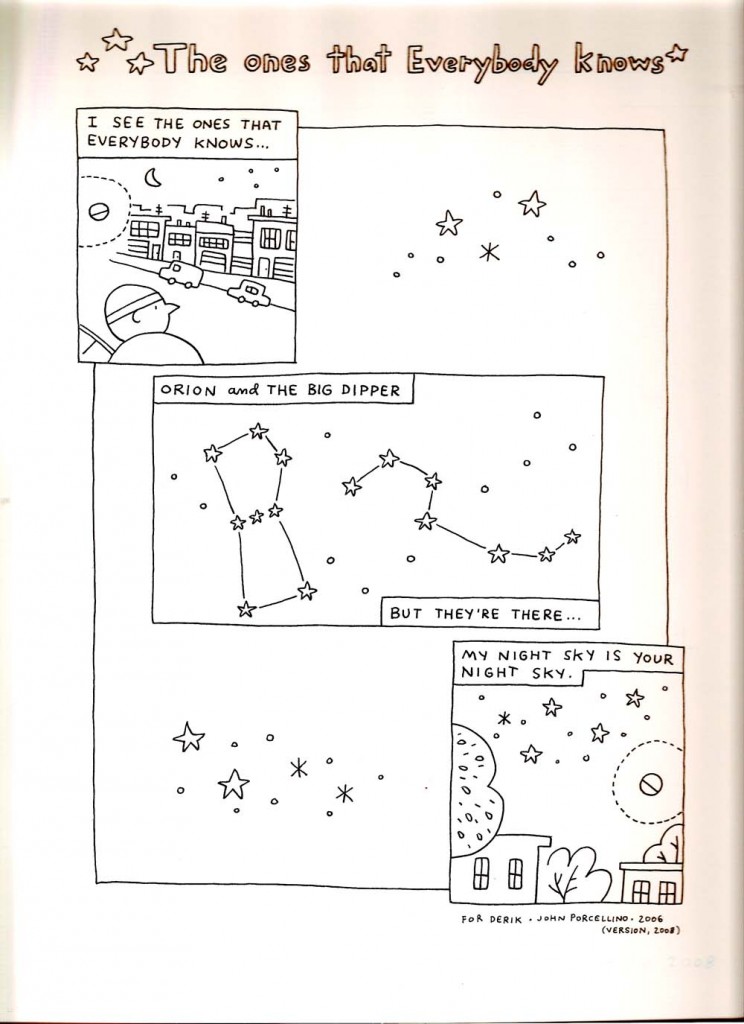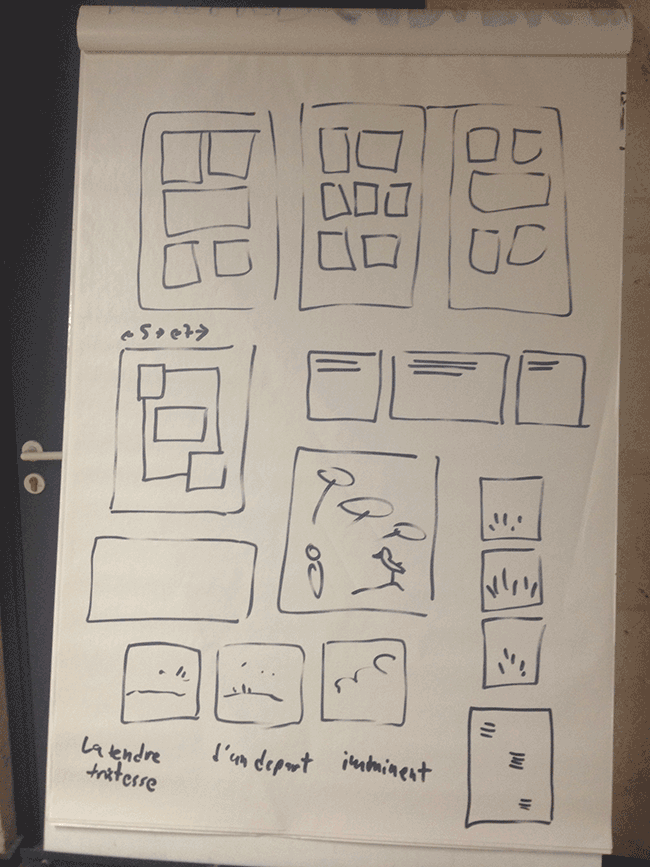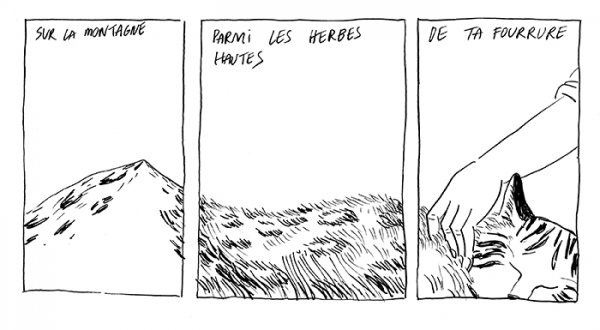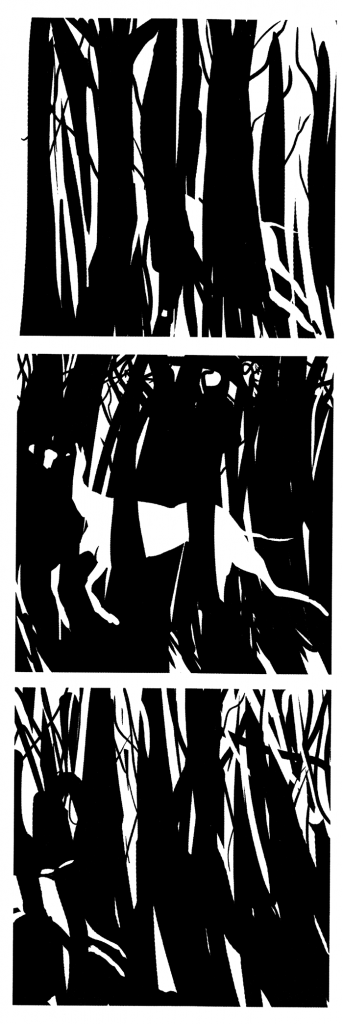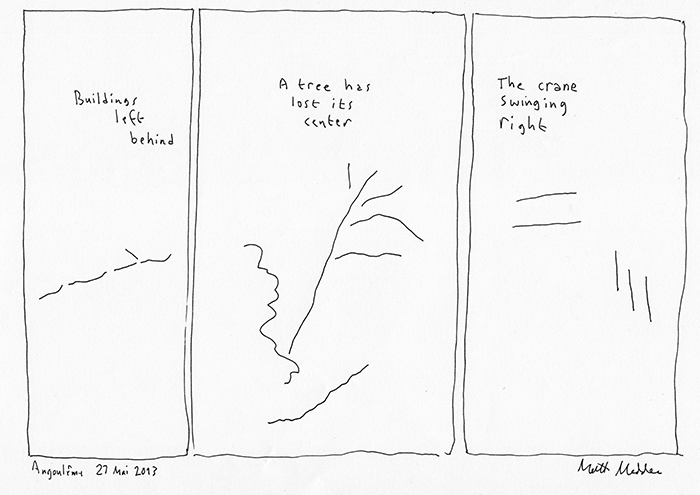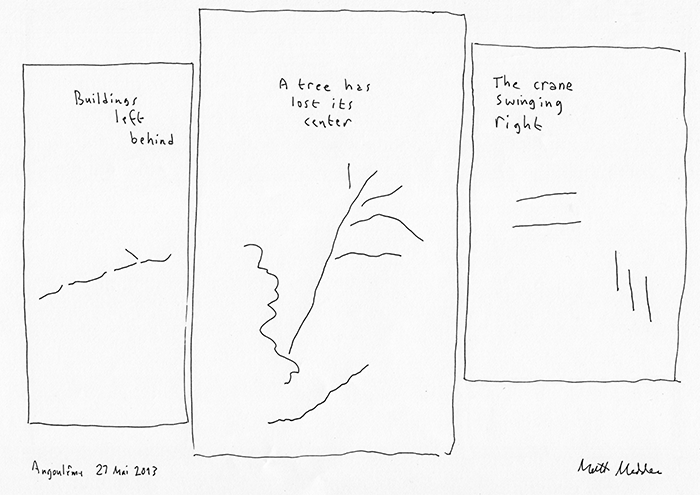
Let me start this post by reassuring those of you who read my first report from Angoulême that things are going much better for me now, and I thank those of you that sent notes (or made comments) of encouragement. I didn't want to wallow in negativity but I did want to share frankly the frustrations I was feeling a few months ago.
Those frustrations—primarily the distractions of family life, my teaching and public speaking obligations, and the never-ending cycle of French paperwork related to setting up shop here—are still present but I have found a workable rhythm and am increasingly able to devote decent chunks of my day to drawing, writing, and reading.
I had a breakthrough of sorts shortly after that last post: the 24 hours comics day hosted by the Maison des Auteurs every year in the days leading up to the FIBD. This year I was the MC, tasked with coming up with a starter constraint that all participants were obliged to base their comics on. The constraint I finally worked up was well-received (I still run into people at festivals who mention it approvingly--I really appreciate it) and although I didn't finish my own comic in the 24 hour period I was able to do so in another seven hours a few weeks later and I was very happy with the results. You can read more about the whole experience here. What was particularly satisfying is that I quickly came up with a story concept I liked and then dove into the work (if not quite quickly or efficiently enough to finish in 24 hours). As I worked I found solutions to story problems and leitmotifs in the course of drawing and writing the pages. You can read the finished comic, Bridge, online for free here.

Though I was rather over-booked this spring I can't say it wasn't often enjoyable and even exciting: in the past two months I've been all over: In Madrid we celebrated the reprinting of 99 ejercicios de estilo with a barrage of interviews and an event at the excellent Librería El Central. I was invited to three comics festivals, in Corsica, Aix-en-Provence, and Amiens, and the latter two I was able to attend with Jessica and our kids. And I was in Paris multiple times—once even just for pleasure!
 |
| lunch with Bob Sikoryak and Jasper in Amiens |
At the FIBD 2013 we inaugurated the OubapoShow and have gone on to repeat it in various forms and plan to develop it further in the time to come. It's been fun and very gratifying collaborating with my Oubapo co-members: Though I've been associated with them for years I hadn't spent time with any of them besides Trondheim and Lécroart until I arrived here last fall. I didn't know what to expect dropping in this late in the game but I've found everyone to be generous and welcoming and I feel very much part of the group, now. A highlight so far was our presentation of the OubapoShow in Paris for les Jeudis de L'Oulipo at the Bibliotheque Nationale de la France. This is a fairly long-running and popular evening event where Oulipo does readings on different themes; occasionally they invite one of the "ou-x-po"—as the associated "workshops for potential X" are collectively named—to take the stage and this was the first time Oubapo has been invited in 10 years. There was a big and receptive crowd including most of the senior members of Oulipo and the show went off without a hitch (you can watch the video here).

My initial push of public events and Oubapo-related stuff culminated in May with an overlapping series of events: the Musée de la Bande Dessinée hung a modest Oubapo exhibit from April to June and in May they featured the original art for my "History of American Comics in Six Panels" as their highlighted "page of the month". During the national "Nuit des Musées" I hosted a sort of mini-OubapoShow with Killoffer and Alex and Pierre from our occasional partners-in-crime, Éditions Polystyrène, which culminated in a diverse, all-ages game of giant Scroubabble which the museum had produced for an earlier Oubapo exhibit. I taught a 4-day masters workshop on comics and poetry forms which yielded a blogpost here about haiku comics that has caught on a bit online and even been translated by Thierry Groensteen for 9eme Art 2.0. Somewhere in there I also managed to program an evening of constrained film, including Lars Von Trier's Five Obstructions, at the Cinéma de la Cité… you can see how sometimes it's hard to get any actual comics done.
 |
| Jean-Pierre Mercier leads a game of massive Scroubabble at la Nuit des Musées in May. |
But I find that the basic balance has shifted for now and I am devoting more and more time to simply drawing and writing (and editing and scanning and inking and correcting) comics. As circumstances have it, I have been able to ramp up incrementally over the last six months: I did two short strips (for the Swiss magazine Strapazin and Chicago-based Trubble Club's on-line jam comic Infinite Corpse) followed by a one-pager for Etienne Lécroart's issue of Mon Lapin, the reboot of L'Assocation's anthology title, then a TWO-pager for Josh Neufeld and Sari Wilson's Flashed! anthology of flash fiction and comics. Just now I am finishing up a 10-page comic for an Oubapo project at l'Association dreamed up by Lewis Trondheim: four of us (LT and I plus Jochen Gerner and Alex Baladi) made comics based on redrawing all the photos and illustrations (ads not included) in a single issue of the French newspaper Libération.
I'll never be a lightning-fast cartoonist but I'm feeling happy about the pace I've hit and plan to maintain it if not speed it up in the years to come.
 |
| page-in-progress for Mon Lapin |
So, what does the future hold? First of all, Jessica and I were recently accepted for another two years of residency at the Maison des Auteurs (is that burying the lead?) which means things are going well here for all of us and we want to keep going. My "project" for the next two years is to produce a book—not a graphic novel but a "novella" or classic French album. I have a few different ideas for book-length works that I'll be developing and reporting on here when the time is right.
Most of the comics I finished this year won't be available for a while, especially not in the US.
One comic that has been published twice is my "Pantoum for Hiram" which debuted internationally in Colombia's Revista Larva (as "Una Madeja para Hugo" and in English in Columbia: A Journal of Literature and Art

And here's what's coming up in the next year, so far:
Most significantly, there's my first long comic since 99 Ways, a 32-page comic called Drawn Onward. I don't have a release date yet but I'm excited to say that it's going to be the inaugural comic issue of the prestigious short story subscription-only magazine, OneStory (another buried lead!). 2013? Could be... Also forthcoming: news about how to get your hands on it even if you're not a subscriber.
 |
| a page from Drawn Onward |
September will see the release of Best American Comics 2013 our final volume as series editors. It's been a fun ride and I'm proud of the work Jessica and I have done there.
My strip for Strapazin should be out in the fall and at that time I will post the English version here and/or on my Tumblr.
 |
| a panel from my TV show-themed strip for Strapazin 112 |
I did a 2-page comic called "Winter Villanelle," based on a flash fiction piece by Aimee Bender for and interesting book project called Flashed! that is due in 2014, sometime.
And early 2014 should see three publications of mine at L'Association:
Cavalcade Surprise, a short "patte de mouche" booklet done with Jessica and Lewis Trondheim
"La Fuite" my story for Etienne's Mon Lapin
"Le Coeur du Roi", my story for Journal Directeur
 |
| pages-in-progress for the Oubapo project, Journal Directeur |
It's a good start, I think.
Read more...
